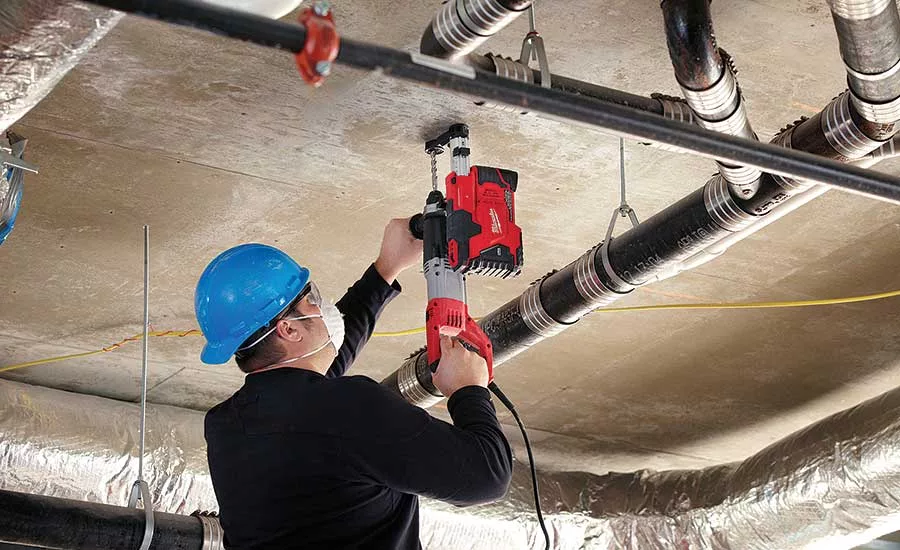Industry continues to adapt to OSHA silica dust rule
Finding simple ways to comply with the rule for the lowest cost of ownership is crucial.

Universal, self-powered dust extractors like the one pictured make it easy to comply with the lowest cost of ownership.
Found in materials like concrete, tile, rock, stone and brick, exposure to silica dust can be a major cause of lung cancer, silicosis, chronic obstructive pulmonary disease and kidney disease in America’s skilled trades. To keep workers safe, the Occupational Safety and Health Administration (OSHA) brought protections into the forefront by starting to enforce its construction standard on respirable crystalline silica, 29 CFR § 1926.1153, in September 2017.
OSHA has spent the past year ensuring that the final rule is followed and employers who haven’t met the defined compliance methods have been met with sizeable fines.
As a plumbing or mechanical company with a workforce that frequently needs to cut through concrete or tile to install pipe — or drill holes in concrete to hang ductwork — the costs associated with arming workers with the tools they need to be compliant has often been steep.
Below are four things to keep in mind when you and your workers are looking to keep tool compliance as simple and minimally intrusive as possible.
Look for solutions that make it easy
Time is money. Making sure you find the simplest ways to be compliant for the lowest cost of ownership is crucial. One of the most seamless tactics is working to comply with the tools you currently own. Some manufacturers offer universal self-powered dust extractors that are compatible with all major brands of SDS Plus rotary hammers (cordless or AC).
Floor-to-ceiling coverage
When it comes to the applications you most frequently encounter each day, it’s important to pick a tool provider that has the critical tools you need for that work.
If your job site is mostly cordless, pick a battery system that is well-supported and has the breadth of solutions you need all on one battery for best productivity.
With that in mind, it’s equally as important that you ensure those solutions are also designed to effectively remove dust.
Ongoing creativity
Look to partner with tool manufacturers that are continually finding fresh, alternative solutions that offer easy compliance. For example, recognizing the need for more simple and universal ways to comply, Milwaukee developed the DUST TRAP Drilling Shroud — an OSHA-compliant solution that meets objective data requirements without the use of a vacuum.
It is built with a clear sleeve, which provides visibility when lining up the hole and during the drilling application. Once attached to the front of the rotary hammer, it keeps dust contained throughout the duration of the drilling process.
End-to-end support
Your team will need support not just during the implementation of new compliance solutions, but also on an ongoing basis.
First and foremost, make sure your tool manufacturer has a broad network of field support that you can readily call upon to answer your questions, schedule trainings, provide technical troubleshooting, and more.
Secondly, ensure that this same manufacturer can equip you and your team with simple, easy-to-use training and support materials. Anyone can make a catalog; a good tool manufacturer partner will provide end-to-end support both in-person and through well-thought-out collateral.
To learn more about the silica dust rule, visit www.osha.gov/dsg/topics/silicacrystalline.
Looking for a reprint of this article?
From high-res PDFs to custom plaques, order your copy today!



